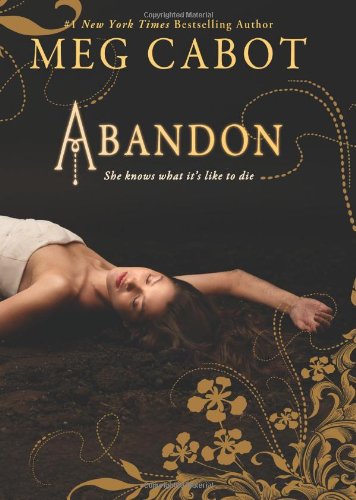Day Three with no power, and now for something completely different, Day One with no hot water! *sigh* Because we're in such an area of low importance, I have a feeling we won't get either back until at least the end of the week. At least, I am trying to prepare myself for the disappointment of going home every day and finding the power still out.
A silver lining (there is one, I think) is that I am tearing through books faster than I can review them. I actually finished this book on Sunday, and I've finished another besides. So here it is -- Lauren Oliver's much-touted Delirium.
Lena Haloway is terrified of love. Love is the disease that has been eradicated by her government -- all citizens receive "the cure" at age 18, and go on to live completely normal, healthy lives free of amor deliria nervosa. Love is what drove her mother to commit suicide when Lena was only six. Love casts a shadow over every aspect of life, every part of Lena's dystopian society. Love is the last thing that Lena wants any part of. But less than 50 days before her cure, Lena realizes that love is the one thing she can't live without. And now she has to make a choice -- live a lie forever, a life without love, or leave behind everything that she knows.
After The Hunger Games and Divergent, I've been definitely riding the wave of dystopian YA literature. Abandon, while not dystopian, was a complete bust, and so I was hoping that Delirium would renew my faith in YA lit. It did. I liked Delirium, unfortunately not as much as HG or Divergent, but I liked it nonetheless.
Lena, as a character, is interesting in her mediocrity. She's no Bella Swan -- quick to tout her mediocrity, yet unable to explain why everyone loves her (I still don't get the attraction). She's not Katniss Everdeen, superwoman and queen of survival. And she's not Tris Prior, a rebel without a cause from the right side of the tracks, rushing headlong into conflict. Lena is...plain. She's not attractive. Boys don't like her. There's nothing "special" about her. Her main concern, unlike Bella, unlike Katniss, unlike Tris, is being singled out. If it was up to Lena, she'd be completely ordinary forever, as long as it guarantees that she won't fall into the same trap her mother did.
The theme of love as a mental illness is an interesting one. Lena is terrified of becoming like her mother -- so blinded by amor deliria nervosa that the disease eventually took her life. It's interesting to see a writer talk so candidly and go so in-depth with the story of a child's response to the mental illness of their parent, and the question, in the end, of if the mother is the one who is sane, and not the authorities, after all.
The turning point of the book, for me, was the climax at the end. Up until that point, I wasn't sure if I'd actually read the sequel. Not that Delirium was bad, but that I had pretty much assumed I knew how everything would go, only to have the end come as a surprise. I don't know if I'll be reading the sequel, Pandemonium, but I wouldn't rule it out. We'll see.
Rating: *** and 1/2
Lena, as a character, is interesting in her mediocrity. She's no Bella Swan -- quick to tout her mediocrity, yet unable to explain why everyone loves her (I still don't get the attraction). She's not Katniss Everdeen, superwoman and queen of survival. And she's not Tris Prior, a rebel without a cause from the right side of the tracks, rushing headlong into conflict. Lena is...plain. She's not attractive. Boys don't like her. There's nothing "special" about her. Her main concern, unlike Bella, unlike Katniss, unlike Tris, is being singled out. If it was up to Lena, she'd be completely ordinary forever, as long as it guarantees that she won't fall into the same trap her mother did.
The theme of love as a mental illness is an interesting one. Lena is terrified of becoming like her mother -- so blinded by amor deliria nervosa that the disease eventually took her life. It's interesting to see a writer talk so candidly and go so in-depth with the story of a child's response to the mental illness of their parent, and the question, in the end, of if the mother is the one who is sane, and not the authorities, after all.
The turning point of the book, for me, was the climax at the end. Up until that point, I wasn't sure if I'd actually read the sequel. Not that Delirium was bad, but that I had pretty much assumed I knew how everything would go, only to have the end come as a surprise. I don't know if I'll be reading the sequel, Pandemonium, but I wouldn't rule it out. We'll see.
Rating: *** and 1/2



















